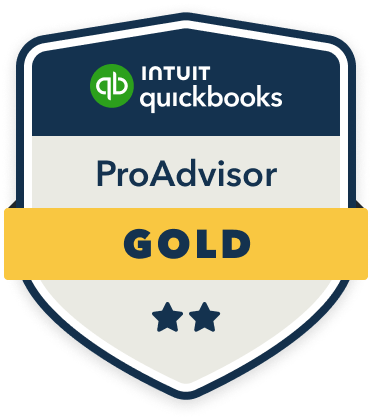Expense Categorization: Teaching Your VA to Code Bills for Compliance
Accurate expense categorization is the backbone of compliant, insightful small business accounting—yet, for many owners, trusting a Virtual Assistant (VA) with this task feels risky. “What if they miscode a bill? Will my books be a mess at tax time?” These questions are common, as noted by financial advisors: “Small business owners worry that delegating financial tasks will lead to lost deductions, IRS trouble, or costly errors,” says a QuickBooks ProAdvisor. But with the right system and training, your VA can become your greatest asset in maintaining bulletproof compliance and real-time financial clarity.
Why Expense Categorization Matters
Every dollar your business spends should be mapped to a specific category in your chart of accounts. This isn’t just for neatness—accurate coding ensures you:
- See exactly where your money goes, supporting smarter budgeting and cash flow management
- Maximize legitimate tax deductions and minimize audit risk
- Generate reports that guide decision-making and forecast growth
- Stay compliant with IRS and regulatory requirements
Business expense categories act as “buckets” for your spending, allowing you to organize transactions, define budgets, and get clear insights into your financial health. Even if your business is small, developing a simple but effective documentation process pays off in more accurate tax prep and better visibility into your operations.
Overcoming the “VA Will Mess Up My Categories” Belief
Many owners hesitate to let a VA handle expense coding. The fear is rooted in bad experiences: vague categories, mismatched receipts, and the dreaded “Miscellaneous” account ballooning out of control. But these risks stem from a lack of structure, not the VA’s capabilities. With clear guidance, a well-defined chart of accounts, and modern tools, a VA can categorize expenses as accurately as any in-house bookkeeper.
Best Practices for Teaching Your VA to Code Bills
- Define and Streamline Your Categories
Avoid overcomplicating your chart of accounts. Group expenses into broad, intuitive categories—think “Office Expenses,” “Travel,” or “Marketing”—and only add subcategories where they support your reporting needs. This makes it easier for your VA to select the correct code every time.
- Document the Rules
Create a simple reference guide. For each expense category, list what goes in, what stays out, and provide common examples. For instance, “Meals & Entertainment: includes business lunches with clients, excludes staff-only coffee runs.” This eliminates guesswork.
- Leverage Automation
Use accounting software like QuickBooks or Xero, which offer automated expense categorization, receipt scanning, and rule-based sorting. These tools reduce human error and make it simple for a VA to match bills to the right category with confidence.
- Require Supporting Details
Insist that your VA attaches receipts, notes the business purpose, and identifies participants for each expense. This level of detail is crucial for tax compliance—especially for categories like meals, where IRS rules are strict.
- Regular Review and Feedback
Set a recurring time (monthly or quarterly) to review how expenses are being coded. Look for patterns, clarify gray areas, and adjust your category list as your business evolves. This ongoing feedback loop will catch small mistakes before they become big problems.
The Crucial Role of a Fractional CFO or QuickBooks ProAdvisor
For many small businesses, partnering with a fractional CFO or a certified QuickBooks ProAdvisor brings added peace of mind. These professionals can:
- Design or refine your chart of accounts to align with your industry and compliance needs
- Build custom rule sets and automation templates for your VA
- Review your books periodically to ensure accuracy and flag compliance risks
- Train your VA in best practices and keep them updated on tax law changes
Their expertise bridges the gap between day-to-day categorization and long-term financial strategy, ensuring you get every deduction you deserve and maintain audit-proof records.
Challenging the Status Quo: VAs Can Be Expense Coding Champions
It’s time to rethink the belief that a VA will inevitably mess up your financial records. The truth is, with the right training, tools, and oversight, a VA can consistently categorize expenses in line with your chart of accounts—often more efficiently than a busy owner juggling multiple roles.
A streamlined, relevant list of expense types simplifies reporting for your VA, reduces errors, and improves forecasting, budget management, and compliance. By proactively managing the “Other” or “Miscellaneous” category and requiring receipts for every transaction, you tighten compliance and gain better spend visibility, supporting smarter decisions.
Emotional Payoff: Confidence and Control
When your VA codes bills correctly, you gain peace of mind. You know your books are accurate, deductions are maximized, and compliance issues won’t slip through the cracks. You can focus on growing your business, confident that your financial foundation is solid.
Takeaway
Trusting your VA with expense categorization isn’t a leap of faith—it’s a strategic move that, when done right, delivers cleaner books, better compliance, and more control. With expert setup, robust tools, and ongoing review—supported by a fractional CFO or QuickBooks ProAdvisor—you ensure every transaction is coded accurately, every deduction is captured, and every compliance box is checked. Your VA, properly trained, becomes a guardian of your business’s financial integrity—not a risk to it.
By investing in professional financial guidance, you’re not just preparing for a sale. You’re creating peace of mind, stability, and options for yourself and those who matter most.
Don’t wait for “someday.” Start building your sellable business today.





